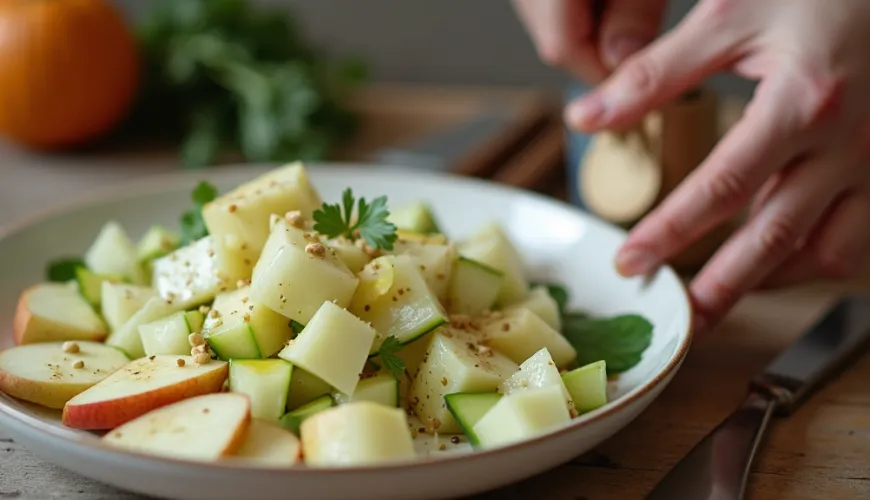
A World Full of Flavors with Vietnamese Pork Belly You'll Love

Vietnamese Pork Belly - When Tradition Meets Irresistible Flavor
The aroma of sweet caramel, deep notes of fish sauce, the gentle spiciness of garlic and chili – all of this combines in one of the most iconic dishes of Vietnamese cuisine: Vietnamese-style caramelized pork belly. This dish, known as "Thịt kho," has won the hearts of gourmets worldwide with its simplicity yet incredible depth of flavors. And it's no wonder – every bite reflects the culture, history, and the Vietnamese relationship with food as a form of care and love.
Vietnamese cuisine is often associated with light and refreshing dishes like pho, bun bo nam bo, or spring rolls. But Vietnamese pork belly, whether caramelized or roasted, shows its other side – warm, hearty, and deeply aromatic. It's a dish often prepared in many households for holidays, family gatherings, or just as a daily tribute to good food.
What Makes Vietnamese Pork Belly Special?
The fundamental difference between Vietnamese and classic European pork belly lies in the preparation method and flavor profile. Caramelized pork belly "Thịt kho" is prepared by slow simmering in a sauce of coconut water, fish sauce, sugar, and garlic. This creates a rich, dark brown glaze that envelops the meat, infusing it with caramel sweetness contrasted with umami flavor and gentle saltiness.
On the other hand, Vietnamese roasted pork belly, also known as "thịt quay," features a crispy crust and a marinade full of aromatic spices like five-spice, soy sauce, and garlic. It bears more resemblance to Chinese cuisine, yet here too, the emphasis is on the balance of flavors and textures.
What unites Vietnamese pork belly recipe by recipe is one thing: respect for ingredients and the art of slow cooking. In today's fast-paced world, slow simmering or roasting pork belly is a form of culinary meditation. The result is a dish that not only satisfies but also delights.
Caramelized Pork Belly "Thịt kho" - A Dish That Tastes Like Home
One of the dishes that has earned love not only from Vietnamese but also from lovers of exotic flavors worldwide is Vietnamese caramelized pork belly with eggs. This recipe is a typical dish for the Vietnamese Lunar New Year – Tết. It symbolizes family bonds, stability, and abundance.
Preparation begins with the pork belly, cut into larger cubes and briefly seared to seal it. Then comes the caramel, made from melted sugar. It must be watched with surgical precision – the right moment determines the final taste. When the sugar darkens to a golden-brown color, meat, coconut water, fish sauce, garlic, and pepper are added. In some versions, hard-boiled eggs are added, which soak up the sauce during simmering and darken to a caramel shade.
The slow cooking takes several hours. The result is meat that almost falls apart and a sauce with a rich caramel flavor and aroma that instantly transports you to the Vietnamese countryside, where food is prepared over an open fire.
A Vietnamese grandmother once said: "Thịt kho is not cooked for taste, but for memories." This quote captures why this dish is so deeply rooted in the culture – it reminds of home, childhood, and family.
Vietnamese Roasted Pork Belly - Crispy on the Outside, Juicy on the Inside
Another popular variant is Vietnamese roasted pork belly, often served as part of various dishes – for example, with noodles, rice, or in the iconic bánh mì sandwich. Unlike the caramelized version, the emphasis here is on texture – the crispy skin is literally addictive.
First, the pork belly is marinated in five-spice, soy sauce, garlic, and sometimes honey. Then it's roasted at a lower temperature to cook the meat, and finally, the skin is exposed to higher heat or grilled to create the characteristic "popcorn effect" – the crust puffs up and becomes crispy and airy.
In restaurants, this pork belly is served with fresh herbs, pickled vegetables, and rice. But at home, it can be enjoyed simply with a bowl of rice and a bowl of fish sauce with chili and lime.
How to Prepare Vietnamese Pork Belly at Home?
It might seem that preparing Vietnamese pork belly from a recipe that sounds "exotic" is challenging. Quite the opposite – most ingredients are now easily found in regular supermarkets: coconut milk or water, fish sauce, sugar, garlic, and quality pork belly with skin. Care and patience are the keys to a perfect result.
For caramelized pork belly, a large pot or cast-iron casserole will suffice. For the roasted version, an oven with a grill or convection function works best. A tip from experienced chefs is to brush the skin with vinegar and salt before roasting – this helps achieve perfect drying and subsequent "cracking" of the crust.
A simple ingredient list for Vietnamese caramelized pork belly might look like this:
- 700 g pork belly with skin
- 100 g sugar (ideally palm sugar, but cane sugar will do)
- 500 ml coconut water
- 3 tablespoons fish sauce
- 3 cloves of garlic
- Black pepper
- 4 eggs (optional)
For preparation, you'll need just a pot and a bit of patience. The result will be a dish that even those who usually avoid pork belly will enjoy.
Why Fall in Love with Vietnamese-style Pork Belly?
In the Czech Republic, pork belly has a somewhat controversial reputation – it's associated with heavy, fatty dishes and often ends up as a greasy treat on the grill. However, Vietnamese cuisine shows another way – harmony of flavors, balance of body and soul.
Imagine a cold winter evening. Snowflakes are falling outside, but inside, there's the scent of caramel and garlic. In a pot, meat is slowly simmering, becoming tender enough to eat with a spoon. In such a moment, you'll discover the magic of this simple yet ingenious dish.
Vietnamese pork belly – whether caramelized or roasted – is more than just a recipe. It's a way to slow down, taste the world, and find joy in simplicity. Thanks to its authenticity, depth of flavors, and connection to tradition, it is gaining more and more fans even here.
And who knows – maybe your kitchen will become the place where Vietnamese pork belly becomes a new family tradition.

